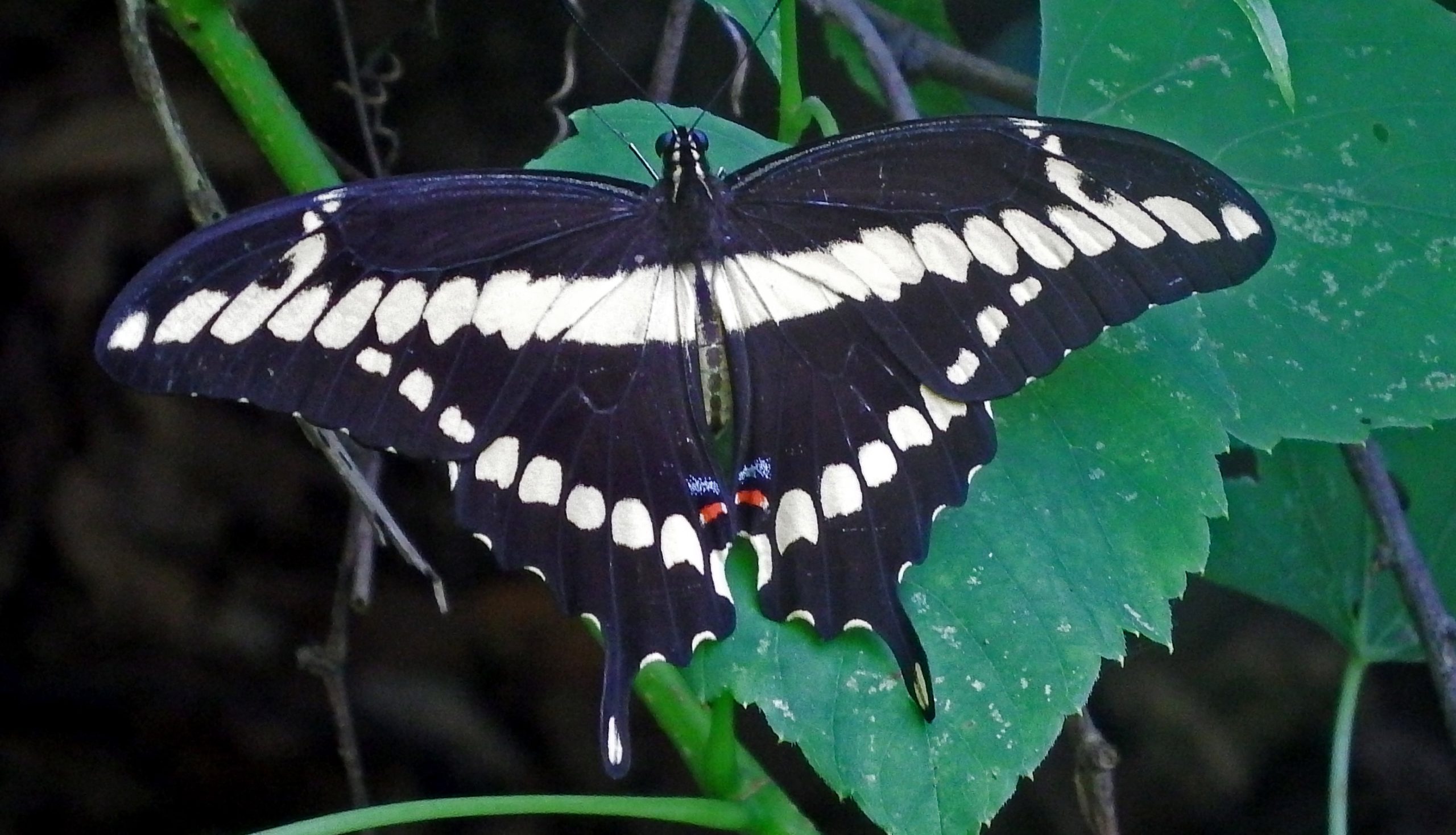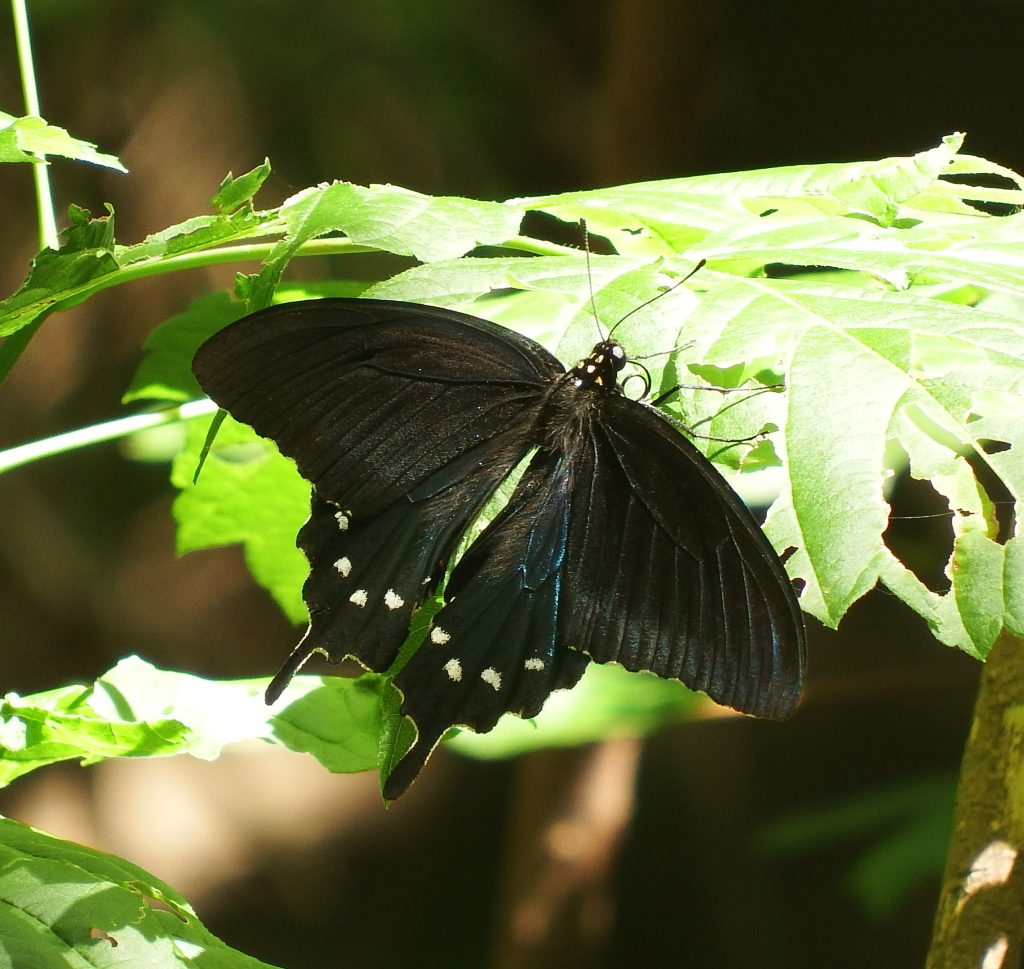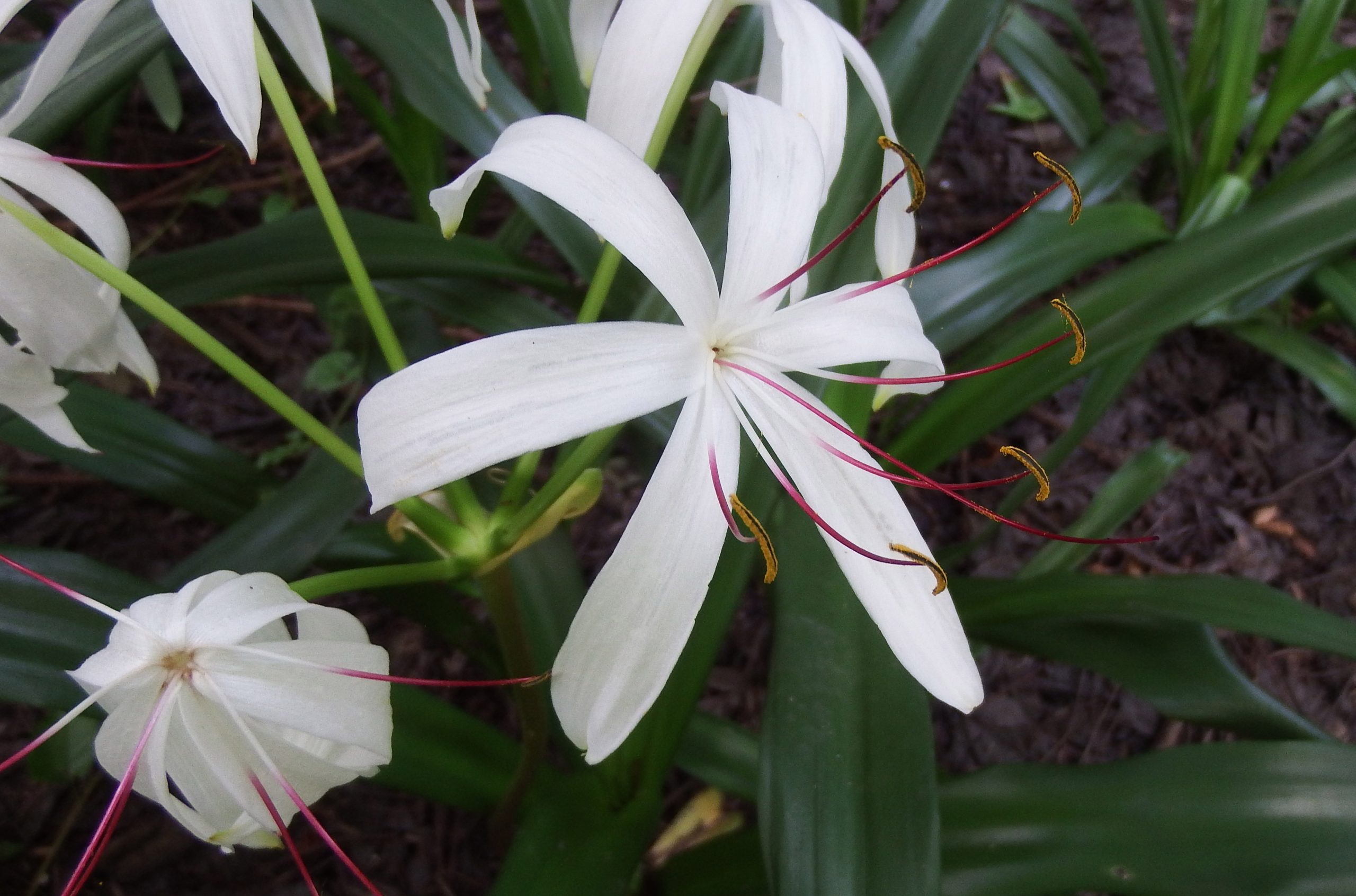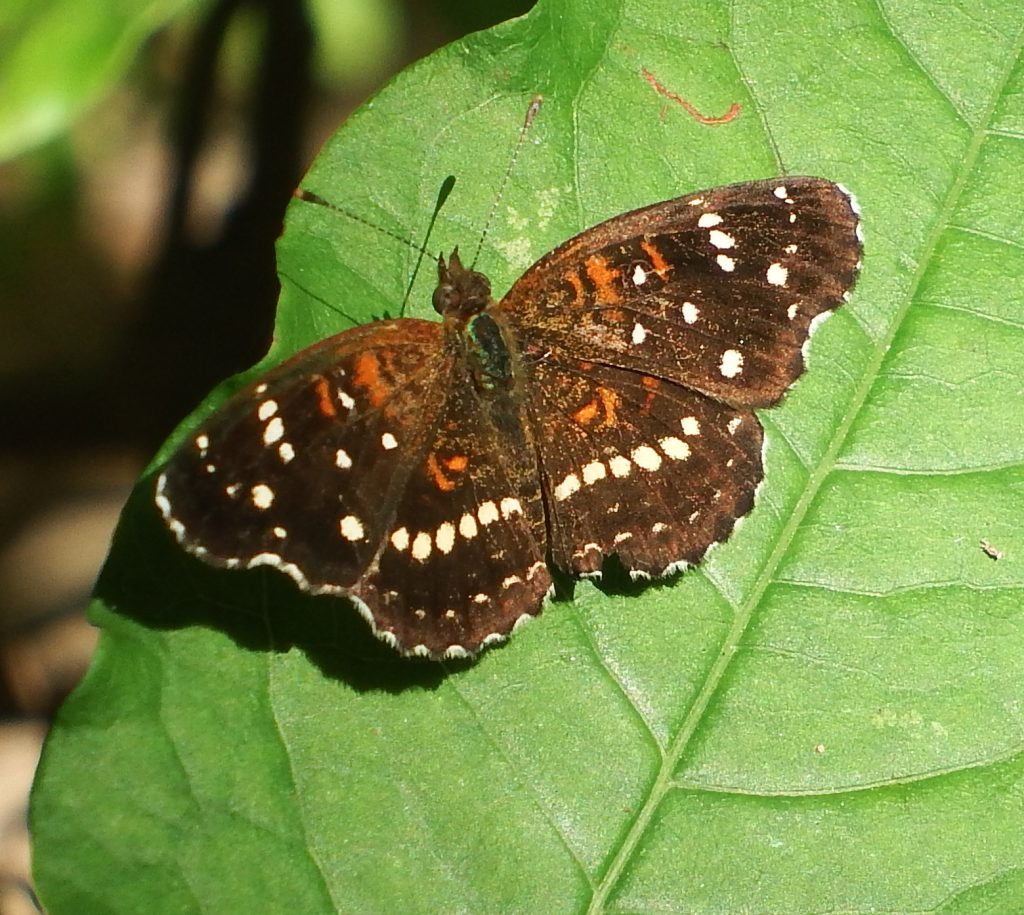Why Here?
Vast swathes of Buffalo Bayou Park are a banquet for butterflies. Wildflowers spread across sunny hillsides. Yet, when I visit the shady Greentree Nature Trail, I always see bunches of butterflies. This is odd because I cannot think of a good reason for them to be there.
Butterflies do not waste time. Their job is to live long enough to find a mate and lay some eggs. That’s it. So, whatever they are doing in there had to further that cause.
Eating would further that cause. Butterflies are terrible at it. All they can manage is to sip nectar (sugar water) through their proboscis, which is a sort of on-board straw they keep curled up under their chin. To drink, they straighten out the straw and poke it into a flower. Sometimes butterflies will also need minerals, which they get by sipping mud. This would be a scheme doomed to failure if it were not for the fact that they have to stay alive only for a week or two. (At some point, we can look at how amazing it is that while all butterflies live for only a few weeks, the generation of Monarchs that migrate to Mexico live for months.)
The Greentree area has plenty of mud, but not very many nectar sources compared with the rest of the park. It does have a nice Buttonbush. I have found two Buttonbushes in the park; the other is along the inlet at the base of the McGovern Cascade. Buttonbush is a good nectar source and a lovely native shrub that likes to have its feet wet. There are also some chunky Spiderworts. But there aren’t enough of them to draw a crowd of nectar seekers.
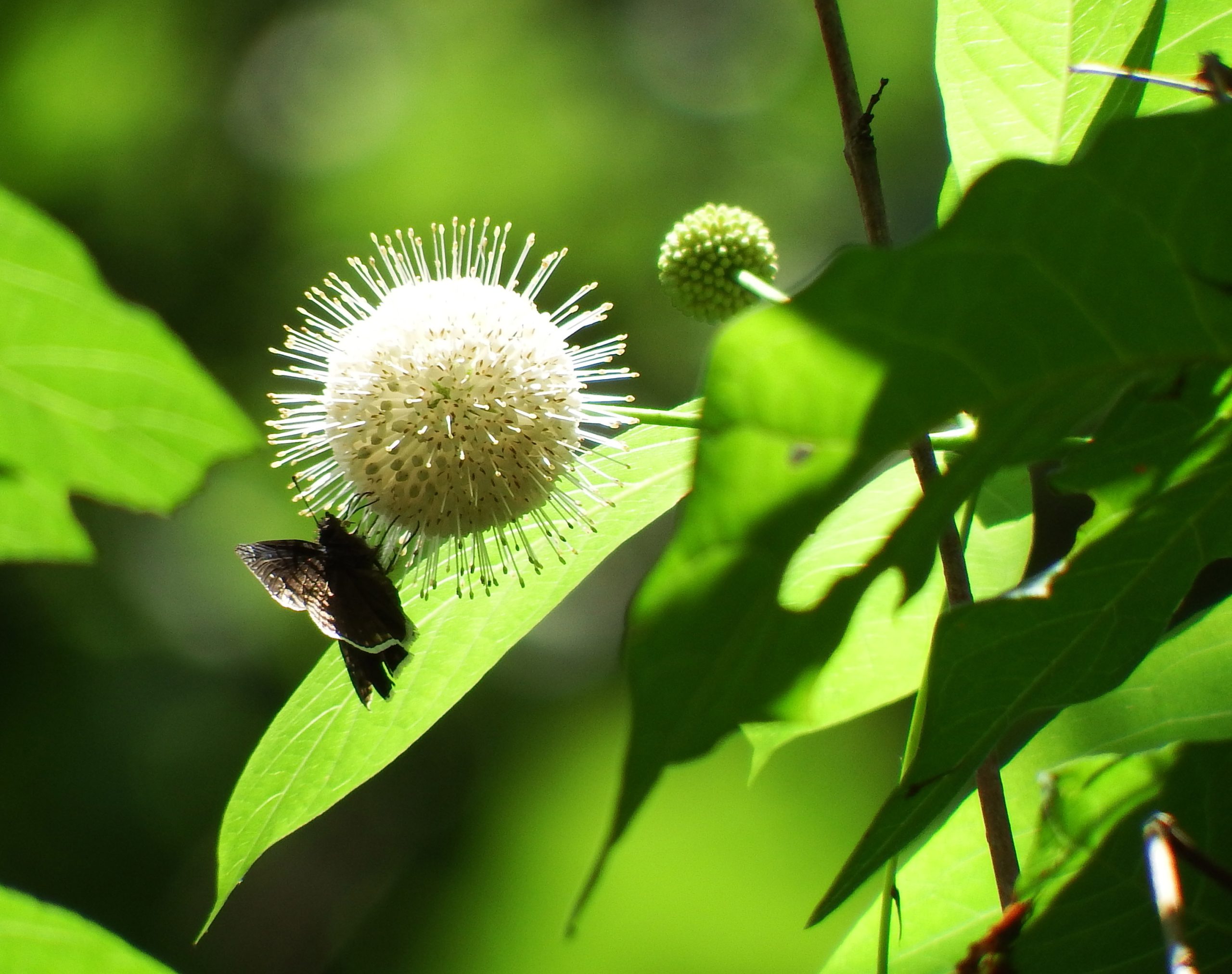
Duskywing on Buttonbush flower. The shrub itself is about 15 feet tall and festooned with these unexpected blooms. The long spikes sticking up are each individual flowers. The flowers are wonderful nectar source for butterflies and bees and the resulting fruit is very valuable to waterfowl.
Greentree boasts a very showy stand of the Southern Swamp Lilly (Crinum americanum). But I cannot find anyone who cites it as a nectar source.
So, it is unlikely that the butterflies are there just to eat.
The second thing butterflies need to do is lay eggs. They can’t lay them just anywhere though. Butterflies have to find the specific plant(s) that their caterpillars are able to eat. They do this by brushing leaves with their feet. They are taking a sniff. We think about taking a sniff through our noses, but the scent receptors in butterflies are in their feet.
I looked for the specific plants that our butterflies use to lay their eggs and I did find an uncommon aquatic milkweed. Asclepias perennis which is a host plant for Monarch Butterflies. It looks a lot like the tropical milkweed many of us have in our gardens, but the flowers are white. I am always amazed by what is in our Park. This is a somewhat rare plant.
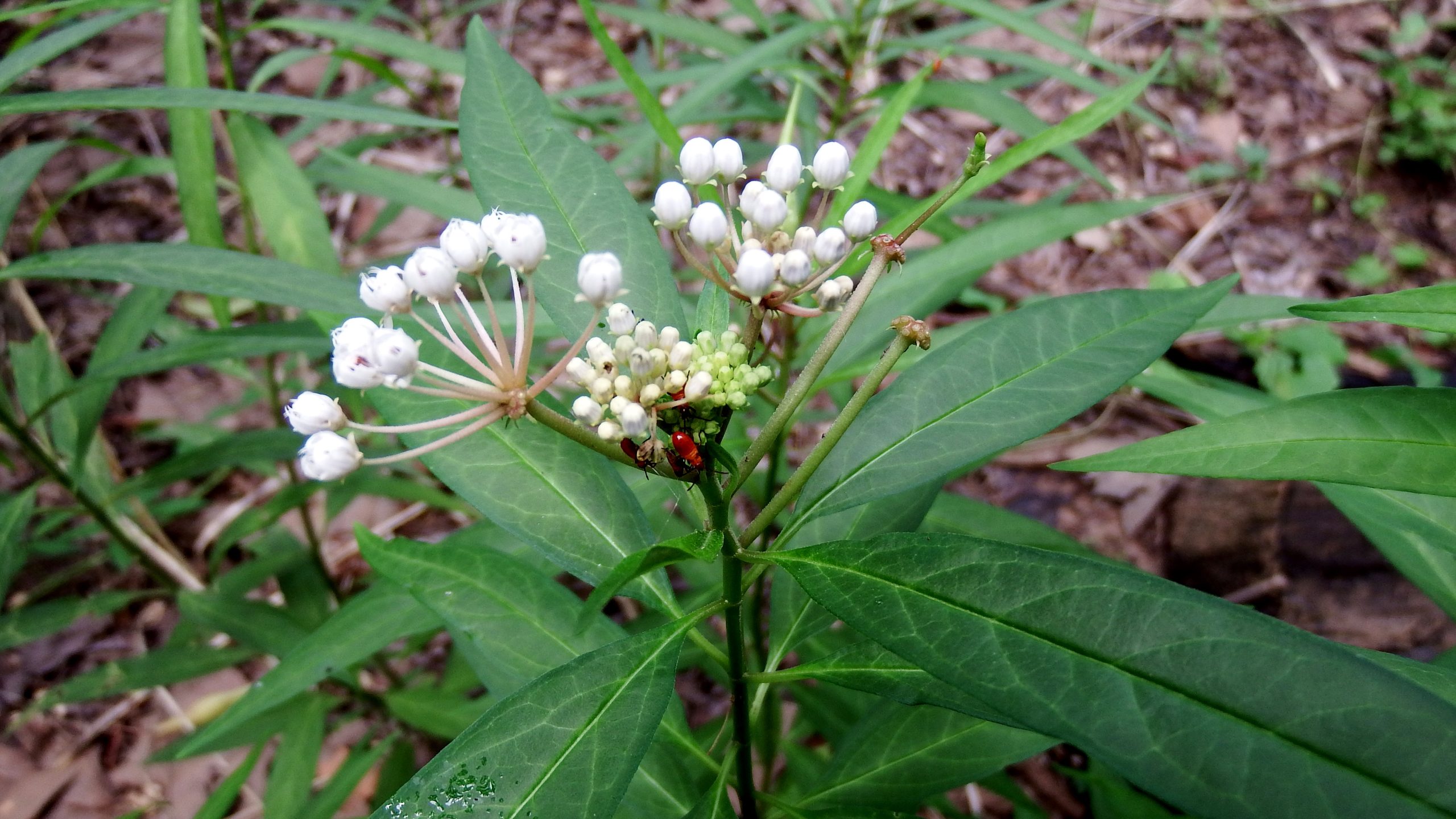
Aquatic Milkweed (Asclepias perennis) is a somewhat rare milkweed that is growing in the Greentree Nature area
One of the butterflies I saw was a Pipevine Swallowtail (there is a photo of that butterfly above). It lays eggs only on pipevine plants and the only native I know of is Snakeroot. It is a kind of unremarkable plant and I never managed to locate any, which doesn’t mean it isn’t there.
I think some people imagine that Naturalists have all the answers, but often, all we have are questions. Every photograph in this post was taken in the Greentree Nature area, and I still have no idea why so many butterflies are there.
If you would like to know more about the life cycle of butterflies, I just wrote an article on the subject for the Houston Chronicle. You can read it here: The Four Lives of Butterflies


